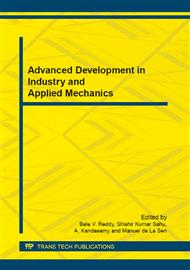p.177
p.182
p.187
p.191
p.197
p.202
p.207
p.212
p.217
Study on the Young’s Modulus of Red Blood Cells Using Atomic Force Microscope
Abstract:
The force-displacement curves of rat’s red blood cells (RBC) were measured by atomic force microscope (AFM) in this study, and the young’s modulus of RBC were calculated. The different speed and loads of probe on AFM was conducted to exam the effect of young’s modulus in RBC. Furthermore, the relationship between young’s modulus of RBC and different depth of indentation from force-displacement curves were investigated. The experimental results and analysis showed that when probe’s maximum load was 5 nN and the velocity was set for 1, 5, 10 and 20 μm/s, the young’s modulus of normal red blood cells for probe down measurements to AFM were 129.56 ± 42.80, 141.56 ± 31.15, 147.90 ± 24.35 and 149.69 ± 29.27 kPa, respectively. It represented that the young’s modulus of normal red blood cells depended on probe’s velocity. Then when probe’s velocity was 1 μm/s and the load was changed to 1, 5 and 10 nN, the young’s modulus of normal red blood cells were measured for 41.45 ± 22.64, 82.72 ± 53.99 and 202.40 ± 16.01 kPa, respectively. It represented that the young’s modulus of normal red blood cells depended on the probe’s load. On the other side, the results of force-displacement curves exam demonstrated that the deeper of probe indented in cells, the measured young’s modulus of normal red blood cells would be increased more.
Info:
Periodical:
Pages:
197-201
Citation:
Online since:
September 2014
Authors:
Keywords:
Price:
Сopyright:
© 2014 Trans Tech Publications Ltd. All Rights Reserved
Share:
Citation:


